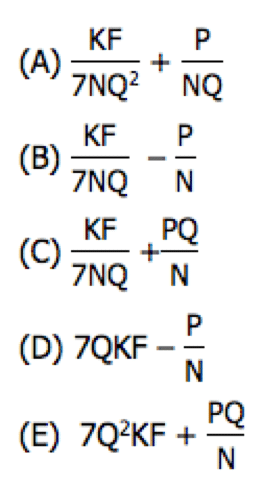
While thinking about an MBA, students often encounter the dilemma of taking the GMAT vs. CAT. The Common Admissions Test (popularly known as the CAT) is a national-level exam in India accepted by the majority of the top MBA programs in the country. On the other hand, the Graduate Management Admissions Test (often known as the GMAT) is accepted in over 7000 business programs offered by over 2000 business schools across the globe, including a few top schools in India like the Indian School of Business (ISB), XLRI, and MDI.
Want to know more about which exam might be better suited for your goals and profile? Here’s all you need to know about the differences between the GMAT and the CAT.
Comparing GMAT vs. CAT
Both the GMAT and the CAT are standardized tests (with an online mode available) designed to test applicants on quantitative ability, reasoning skills, and data interpretation skills. The main differences between these two top MBA entrance exams are listed in the table below.
| Parameter | GMAT | CAT |
|---|---|---|
| Organizing Institution | Graduate Management Admission Council | Indian Institute of Management |
| Eligibility Criteria | The applicant should be at least 13 years old. No upper age limit. | A minimum of 50 percent marks in the bachelor’s program. No age restrictions. |
| Acceptability of the Exam | Business Schools around the globe | Indian Business Schools |
| Validity of the Exam | Valid for five years | Valid for one year |
| When Applicants Can Take the Exam | Year-round (taken as per the student’s convenience) | Once a year (conducted at a fixed time) |
| Exam Format and Duration | Four sections consisting of 80 questions that have to be attempted in 187 Minutes. The four sections are Quantitative Reasoning, Verbal Reasoning, Analytical Writing Assessment, and Integrated Reasoning. | Three sections consisting of 100 questions that have to be attempted in 120 Minutes |
| Score Format | Score+percentile | Only percentile is reported |
| Exam Fee | USD 250 | INR 2,000 approximately |
| Max number of attempts | A maximum of five attempts in one year is allowed. There should be a difference of 16 days between consecutive attempts. Overall, eight attempts in a lifetime are allowed. | No such restriction except for the fact that the exam can be taken only once a year when conducted by the authorities. |
Now, let’s deep dive into some of the critical differences.
GMAT vs. CAT Difficulty
Honestly, it depends on the preparation type and personal comfort of the test takers. Some people find the GMAT more difficult due to the kind of questions asked and the adaptive question format. While taking the CAT, the students can see the entire paper and identify the questions they should attempt to answer, in order to maximize the score in the given time. When it comes to the GMAT, you can only see, and therefore attempt to answer, one question at a time. Skipping a question on the GMAT usually leads to a penalty.
On the other hand, some people find the CAT more difficult due to a high percentile competition. For instance, you need a 99+ percentile to be able to get into top IIMs. Moreover, the syllabus is slightly less structured than the GMAT, and the questions on the exam are slightly more difficult than on the GMAT, making the preparation more challenging.
This brings us to our next point of comparison.
Syllabus
The GMAT exam has four sections, namely Quantitative Reasoning, Verbal Reasoning, Analytical Writing, and Integrated Reasoning while the CAT has 3 Sections – Verbal Ability and Reading Comprehension, Data Interpretation & Logical Reasoning, and Quantitative Ability. As mentioned above, the GMAT tests applicants on Analytical Writing apart from Quantitative Ability, Reasoning Skills, and Data Interpretation.
While you can easily find the topics that are commonly tested on both of the exams online, there is no exact syllabus prescribed by the organizing institutes. While we are comparing the syllabus, it is important to look at the type of content that comes in the respective exams. Let’s look at the syllabus one section at a time.
- Quantitative Ability
The quant section is comparatively more difficult on the CAT. While similar concepts are tested, the GMAT asks comparatively more basic questions and the CAT tests more complex concepts from the same topic.
- Verbal Ability
The CAT Verbal focuses on reading comprehension a lot more than the GMAT, while the GMAT Verbal test Sentence Correction and Critical Reasoning along with Reading Comprehension. Hence, the GMAT has a heavy English grammar component which is not featured in the CAT exam. With the CAT, the applicants need to focus more on paragraph structure than the grammatical structure of sentences and phrases. Usually, the GMAT poses a much greater challenge for Indian and other non-native candidates as compared to the CAT.
- CAT Data Interpretation & Logical Reasoning vs. GMAT Integrated Reasoning
Here, the similarity is that both the CAT Data Interpretation and the GMAT Integrated Reasoning have graphs, charts, and math operations that test the candidates’ data interpretation skills. On the GMAT, graphs and charts are more detailed compared to the CAT, with paragraphs of accompanying text. An important point of difference is the fact that while the CAT’s DILR section is a part of the overall score, the GMAT’s IR section is not counted for the score out of 800, and its result is separately reported on the GMAT scorecard.
The CAT Logical Reasoning is nothing like the GMAT IR. On the CAT LR, the applicants need to detect and comprehend logical patterns. Though there are elements of logic, logical pattern comprehension is not tested directly on the GMAT.
Adaptive vs. Non-Adaptive Format
A fundamental difference between the two is the adaptive nature of the GMAT exam.
GMAT questions are adaptive in nature. Fundamentally, what it means is that on the GMAT, the difficulty level of the next question is based on the response on the previous question. The exam starts with an average difficulty level question, and the applicants get a slightly easier or more difficult question as they progress through the exam. This means that the applicants can’t skip a question or return to it later. The exam needs to be solved one question at a time!
Meanwhile, the CAT has a non-adaptive format. The applicants can view the entire question paper, devise their strategy on which questions to attempt and in which order, review their responses, skip the ones they are unsure about to avoid negative marks, etc. Thus, the exam tries to evaluate the candidates’ ability to be selective and attempt the questions that maximize their score in the given amount of time.
Scores
On the GMAT exam, the candidates are marked between 200 and 800. Section-wise, the candidates are scored 0-6 for Analytical Writing Assessment, 1-8 for Integrated Reasoning, and 0-60 for Verbal Reasoning and Quantitative Reasoning. Only the Verbal Reasoning and Quantitative Reasoning sections are used to calculate the score out of 800. The Analytical Writing Assessment and Integrated Reasoning scores are reported separately on the scorecard.
The CAT exam is for 300 marks. Each of the 100 questions carries three marks for the right answer. Each wrong answer carries a negative mark, and the final score is based on the number of correct and incorrect answers. The CAT scorecard has a section-wise percentile as well as an overall percentile score reported.
Should I take the GMAT or the CAT?
This is a complex discussion influenced by a number of factors as well as the personal preference of the test taker. Here are some of the top factors you should consider before making a decision:
- Target Schools:
The CAT is mostly popular in India and a limited number of global colleges. Apart from 20 IIMs, 100+ business schools in India accept CAT scores. Some of the international schools such as SKEMA Business School, SP Jain Institute of Management, Singapore Management University also accept CAT scores.
The GMAT is globally recognized and accepted in over 4000 business schools, including top B-Schools like Harvard Business School, Stanford, etc. Some Indian schools like ISB, XLRI, etc., also accept GMAT scores. Here is a detailed list of Indian schools that accept GMAT scores. So, the applicant needs to identify the schools where they want to apply and use that as the most important factor to decide on which exam to prepare for.
- Location:
If you are planning to study and settle abroad, chances are you would need a good GMAT score. If you are planning to study in India, a top CAT score will provide more opportunities.
- Scholarships:
Merit-based scholarships, Need-based scholarships, and External scholarships can be explored for almost all global schools after taking the GMAT exam. This is another factor that you should consider before deciding which exam is the right one for you.





